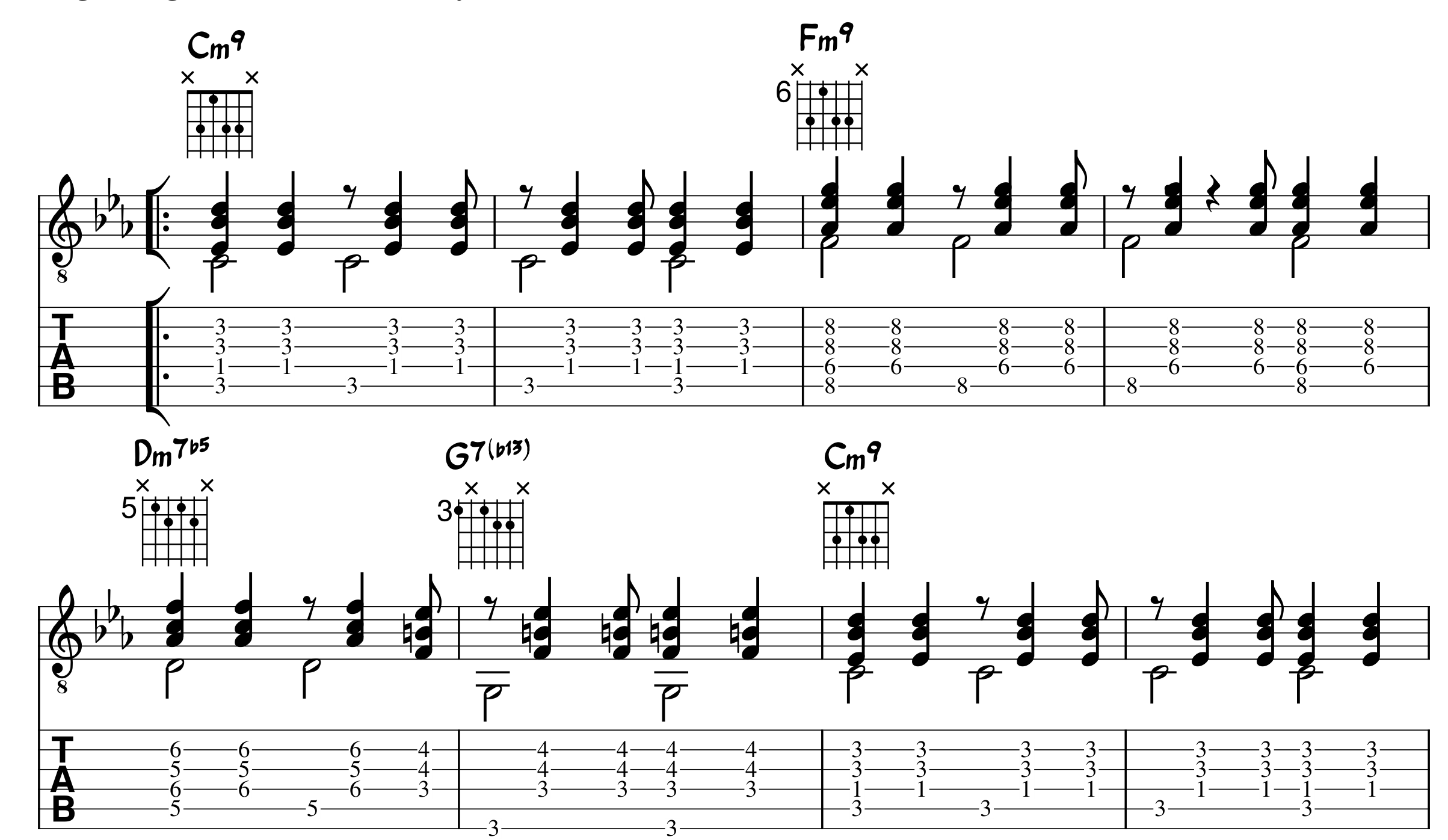Blue bossa is one of the most played jazz bossa tunes and a popular song for jam sessions and improvisations. The short form (the piece is only 16 bars long) and the simple but catchy melody are certainly the main reasons for this success. The fact that Kenny Dorham recorded the piece with jazz legends Joe Henderson and McCoy Tyner certainly didn’t harm the quality:
Blue Bossa - Learn The Melody!
Blue Bossa is in the key of C minor.
The main chords Cminor9 and Fminor9 and the jazz cadence Dm7(b5) to G7 are all diatonic chords. The melody is also a simple sequence of notes from the minor scale, brought to life primarily by its rhythmic properties.
The song takes a brief turn as the chord progression shifts into the key of Db-Major in bars 9-13. This is happens through an abrupt change of key with a II-V-I cadence (Ebm9 – Ab13 – DbMaj7). The way back to C Minor is very elegant though, as the chords DbMaj7 and Dm7(b5) have three of four chord tones in common. Take a look at the Leadsheet:

In preparation for melody and improvisation, the fingerings of the minor and major scales should be repeated again. A comfortable fingering for the melody results in the fifth position.


After the melody pickup with an octave jump to the high G, the song begins with the typical rhythms of Afro-American music. Two features are of particular importance here:
- The dotted note (e.g. at the beginning of the piece)
- The sustained note on the 4+ (almost every other measure)

The dotted note on the first beat shifts the rhythmic accent of the phrase to the 2+. This creates a forward motion and gives the melody a light, flowing feeling. The sustained note on the 4+ is actually the first note of the next measure pushed forward by an eighth note. This again gives the melody swing and lightness. Try playing the melody only on heavy beats, or with just one of these two rhythmic variations – the difference is quite noticeable. This type of off-beat phrasing is one of the most important characteristics of African-American music.
Blue Bossa - BOSSA NOVA CHORDS
In addition to the melody, it is worth working on the chords to prepare the song for a duo situation and to be able to take on both the melody and the accompaniment. Here you will find the accompaniment in Partido Alto rhythm with style-typical chords:

I demonstrate the basic accompaniement as well as a more advanced version with an alternating bass and some passing chords in this video. You can find a PDF with both versions and the melody in the Shop!